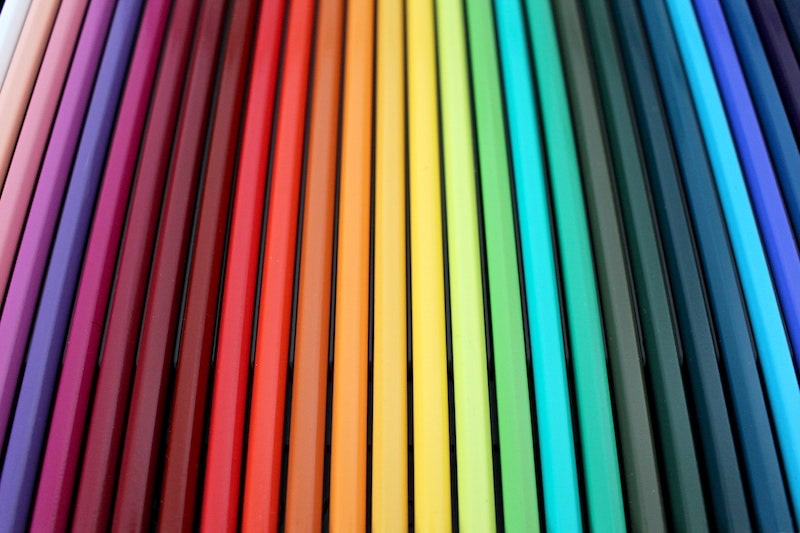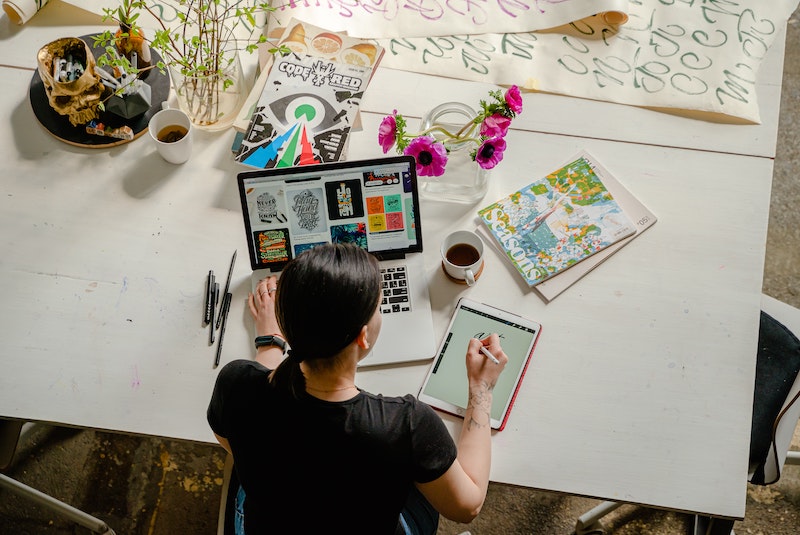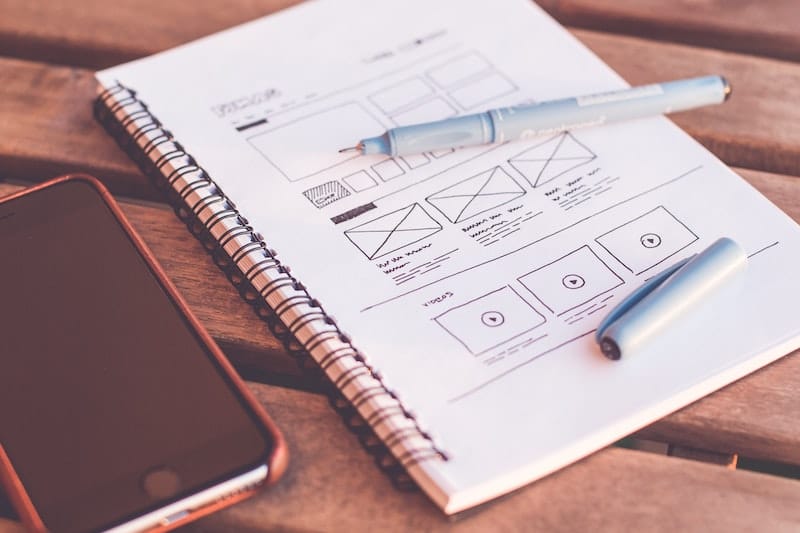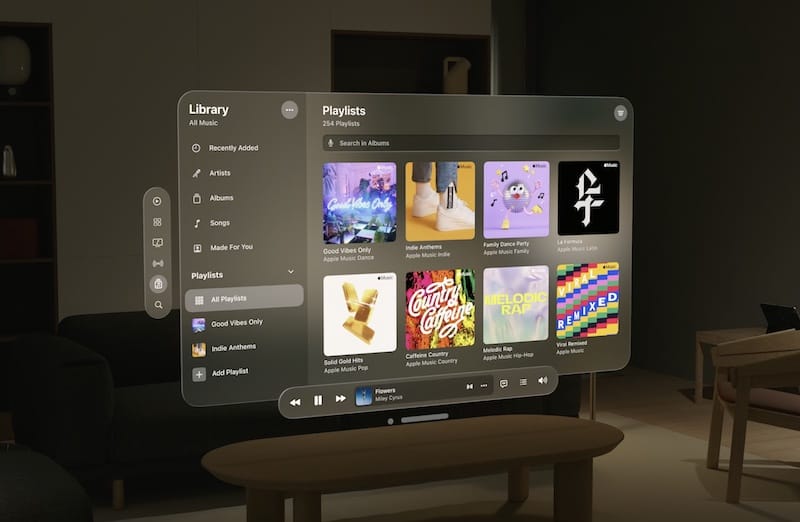Graphic Design is a professional activity (or art?) of distant origins in time, today it finds application in numerous areas of communication, in particular the digital one.
In this article, I want to briefly explain what is meant by graphic design, how it relates to the world of UX design, and what are the scenarios and trends for 2021.
Table of Contents
Origins of graphic design and definition
Although some scholars believe it is correct to link the origins of graphic design to the very roots of civilization, taking rock paintings in the Paleolithic era as a cue, or in a more organized way with Egyptian hieroglyphs, it is actually in the twentieth century that the concept of drawing an illustration associated with words, find a systematic application in marketing and communication.
The term graphic design appeared, in fact, for the first time in 1922, in an essay edited by William Addison Dwiggins entitled “New Kind of Printing Calls for New Design.” (To learn more about all the stages of development in the history of graphic design, I suggest you read this article by Canva).
Partly anticipated by the development of lithography in the eighteenth century, graphic design begins to experience a certain development at the level of profession after the Industrial Revolution and especially in the Second World War, when the names of companies began to be represented with a graphic design, called precisely logo, and when it has become essential for companies to take care of their brand identity.
Graphic design in fact means creating visual content, with which you intend to communicate a message and which finds great application in the field of marketing and advertising, so as to transform some campaigns into real works of art.
The 3 main elements of Graphic design
Since its origins, graphic design revolves around the right combination and balance between some fundamental elements. Since the ultimate purpose of graphic design is to convey a message and trigger an emotional reaction in the recipient, it is important to know the techniques for using three main elements:
- Colors
- Images
- Typography
Let’s see them one by one.
Graphic design – Colors

The subject of multiple and in-depth studies by brands, color is the fundamental variable to arouse emotions. Each color, and its innumerable hues, involves a whole series of unconscious associations to certainly established sensations or thought patterns. For example, red is easily associated with passion, as well as with a dangerous situation; yellow is a color close to the concept of joy, but at the same time it is also the color of anxiety; green is easily associated with nature, pink with femininity and so on.
Not surprisingly, the color chosen by a brand wants to reflect certain values and get as close as possible to the unconscious perception of its audience. To see some examples, I suggest you deepen the subject in this article on the importance of colors.
Graphic design – Images
Images represent the heart of graphic design and are perhaps the element that most stimulates the creativity of those who carry out this profession. Starting from the basic elements, such as lines and shapes, images find expression in different visual communication techniques: illustrations, drawings, icons, photographs, animations, are all ways to translate the ideas and concepts to communicate.
Furthermore, the position, texture, size, and aspect ratio of the images can change the way the message is perceived, as well as the choice of empty spaces affects the final result of the graphic design.
Graphic design – Typography
By typography, we mean the set of characters used for text messages or so-called fonts.
This is not a mere aesthetic choice between a Serif or Sans Serif font type. Those involved in graphic design, in addition to knowing the anatomy of each type of font, will have to be able to manage dimensions, spaces between letters, lines, and paragraphs and to know the main techniques for using typography in order to make the message readable, understandable and pleasing to the recipient.
For an overview of the various techniques of use, I recommend starting with this article on types of fonts and typefaces.
Graphic Design and User Experience – the perfect marriage?

When graphics meet the UX, another important goal is added to be taken into account in the design: the design must not only make the interface pleasant and convey a message, but it must also be usable, it should work. When it comes to websites and applications, in fact, users interact with the contents. For this reason, all the elements concerning graphic design are at the service of usability.
In this context, graphic design concerns a core activity of the UI Designer (UI = User Interface), that is the professional who is responsible for choosing the style of the site or interface, which colors to use, which images to insert, and where place them, which fonts to use.
Compared to the more classic activity of a graphic designer, the UI Designer will have to study and take into account the information architecture of the digital product, giving priority to the user’s needs.
Although this type of activity requires a shift in mentality from creator to problem solver, those who already work in the field of graphics can leverage their skills to help create a better UX. Indeed, those who already have in-depth knowledge of graphic design tend to aspire to become a UI / UX Designer relying on an already trained sensitivity in organizing spaces and graphic elements.
If you are interested in learning more, take a look at our UX design courses.
Graphic design – The trends to ride for 2021
Graphic design will continue to be fundamental for brands wishing to take care of their positioning on the market: logo development, corporate identity, and brand identity remain at the top of the required activities.
The same goes for everything related to advertising, but with an important shift to digital. If, in fact, it will still be necessary to produce flyers, brochures, and signage, the past year has made companies understand how important it is to have a consolidated online presence.
Customer journeys are in fact increasingly interactive and user engagement is the new metric that determines the success of a campaign.
So here is a rundown of the most requested products in the graphic design field:
- Digital content for inbound marketing strategies: social posts, infographics, landing pages, email templates, banners, PowerPoint templates, and everything that companies need to populate the various stages of the sales funnel with content.
- UI development: web pages, themes, apps, games to bring and engage users.
- 3D design augmented reality and virtual reality represent the new frontier of visual expression that will find important applications in both the industrial and entertainment sectors. The most obvious fields of use are certainly the gaming sector and everything related to advertising, but we also think, for example, of the whole world of design, or the remote management of machinery and plants in the 4.0 industry scenario.
- Development of Emoji, now an integral part of all social platforms and instant messaging applications.
Extra Resources
- Join our FB Exclusive Group to get access to extra resources, it’s FREE.



